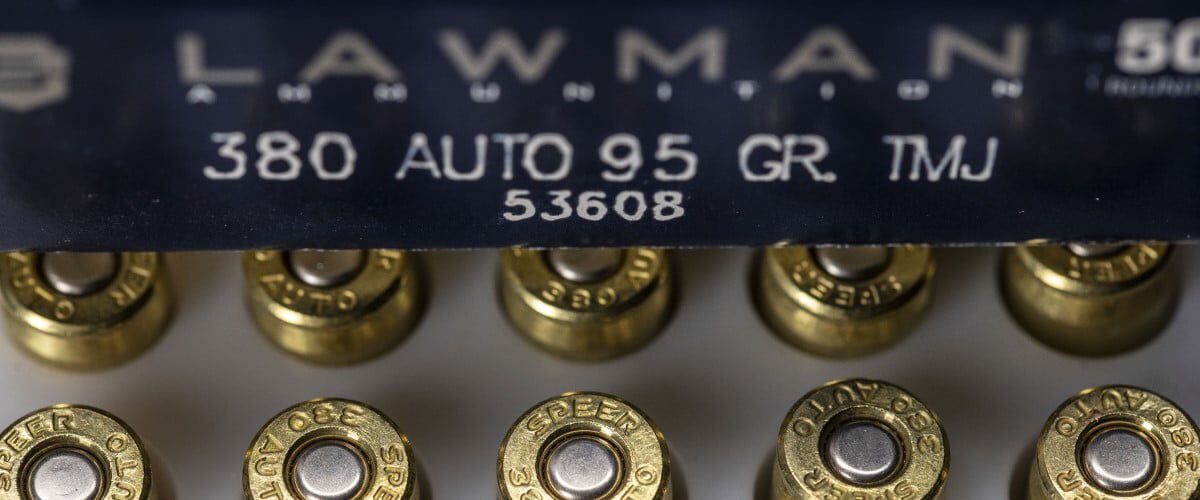
Considered an ideal concealed carry cartridge by some and inadequate by others, the compact cartridge we’ve come to know as the 380 Auto has been with us more than a century. Despite its detractors and a stable of more potent rounds, it continues to win over shooters new and old.
Ironically, considering the many cartridges that have hit since 380’s introduction, it is better and more relevant than ever, thanks to bullet designs that have largely leveled the playing field between popular defensive calibers in terms of practical performance needs. So, let’s take a look at how it got here and what the future holds for this small but significant cartridge.
History
It all started in 1908, when Colt introduced the John Browning-designed 380 Auto to American shooters for its Model 1908 pocket hammerless semi-auto. The cartridge was introduced in Europe in 1912 and is also known by several other names, including 380 ACP, 9x17mm, 9mm Browning, 9mm Corto, 9mm Kurz, 9mm Short and 9mm Browning Court.
Tech Specs
The 380 ACP moniker itself is a bit confusing, as it doesn’t reflect the diameter of the cartridge’s bullet, which is .355 inch. Browning derived the 380 Auto design from his earlier 38 ACP. The new cartridge was designed to be truly rimless, and it headspaces on the case mouth rather than the rim for better accuracy.
Intended for blowback pistols, the 380 Auto saw broad usage after its introduction. At least five European nations adopted it as their standard pre-World War II pistol cartridge. Germany also made extensive use of the cartridge after capturing hundreds of thousands of pistols during the war. Few countries retained it as a service cartridge after World War II, as the 380 Auto was replaced by the 9x19mm Parabellum, or 9mm Luger.
Modern Use
Nowadays, the cartridge remains a popular self-defense choice, especially for people who favor a lighter, smaller pistol with more manageable recoil. The 380 Auto has a shorter range and less power than other modern pistol cartridges, which has fueled debate about its effectiveness for everyday carry.
However, the conventional wisdom about the cartridge’s practical usage has changed in recent years as bullet designs have evolved far beyond those of John Browning’s day. With current bullet performance, it matters far less what caliber in stamped on a gun or cartridge case than what bullet is loaded into that case.
Best Offerings
Standard 380 Auto bullet weights range from 80 to 120 grains, with bullets in the 85- to 95-grain weight achieving muzzle velocities of about 950 to 1,100 fps and penetration depths of 6.5 to 18 inches.
Speer offers 90-grain 380 Auto loadings in its Gold Dot Handgun Personal Protection line, and a 95-grain loading in its Lawman Training cartridge. Reloaders can also craft their own ammo with .355 90-grain Gold Dot component bullets. Choose the right options, and you’ll likely find the 380 Auto still delivers after more than 110 years.